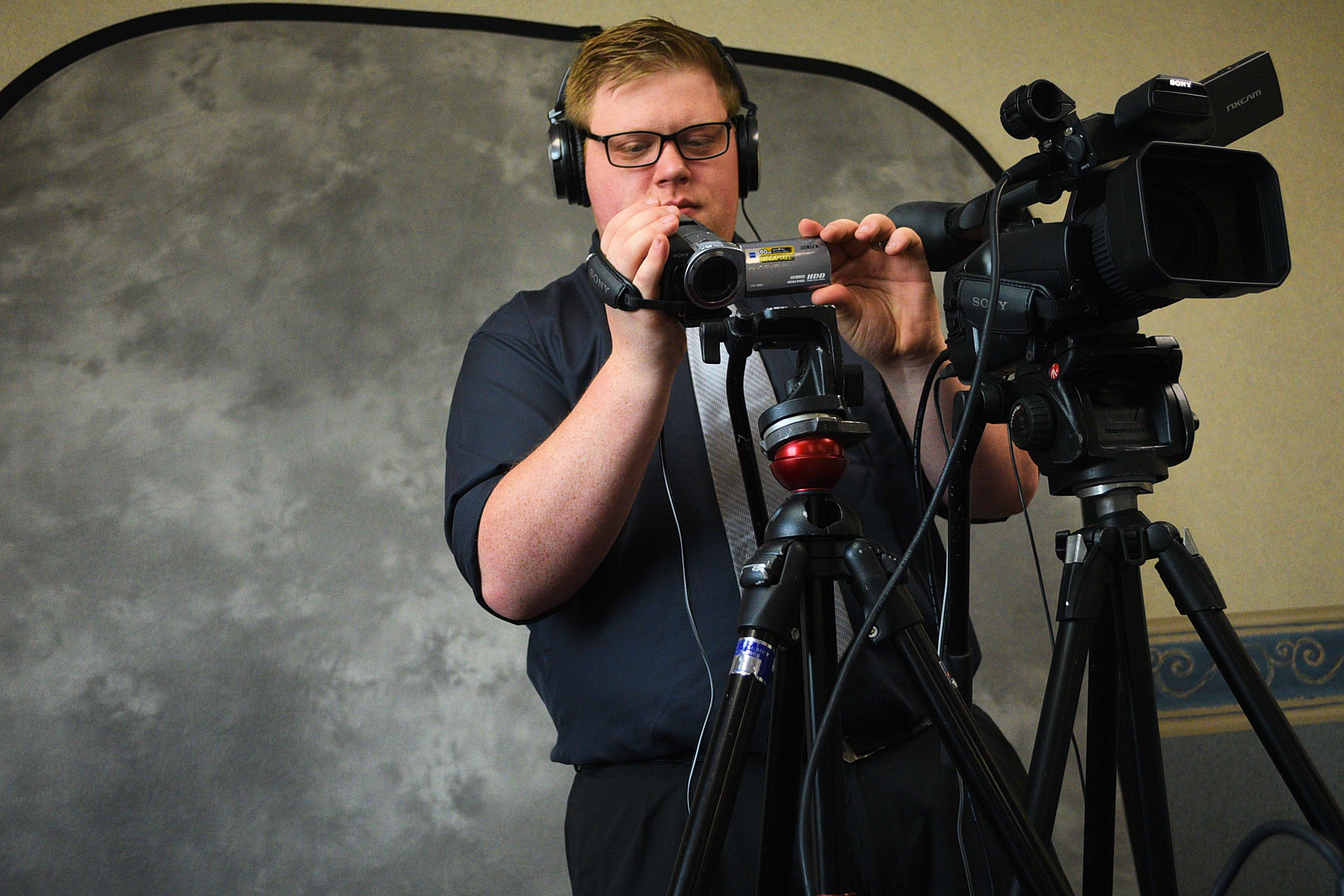Delving Into the Mechanisms of Legal Videography: Unveiling Its Operation in Shielding Genuine Visual Statement for Judicial Proceedings
In the world of judicial proceedings, the duty of legal videography stands as a keystone in preserving and offering visual proof. As technology continues to development, the devices behind lawful videography have actually come to be increasingly detailed, providing a crucial layer of credibility to statements recorded on video.
Historic Advancement of Legal Videography
Checking out the historical progression of lawful videography discloses a considerable makeover in the recording and presentation of aesthetic evidence within the lawful landscape. In the past, legal proceedings heavily counted on composed pictures and records to record events and provide evidence. With the advent of video innovation, the legal market experienced a standard change in just how aesthetic statement was recorded and offered.
The advancement of lawful videography can be mapped back to the late 20th century when innovations in video clip recording tools made it extra accessible for use in courtrooms. This technological advancement not just boosted the precision and integrity of aesthetic proof however also transformed the way cases were presented to courts and judges (Legal Videography). Attorneys began to identify the influential power of video clip recordings in communicating emotions, subtleties, and non-verbal signs that created records or photographs alone might not catch efficiently

Technology Advancements in Video Clip Documents
What vital technological advancements have revolutionized video clip documents in the legal field? The lawful area has seen significant advancements in video clip paperwork innovation that have boosted the credibility and dependability of visual proof in judicial procedures. One of the vital improvements is high-definition (HD) video recording capacities, which supply crystal-clear pictures and sharp details that are critical for precisely recording testimonies, facial expressions, and various other visual cues. In addition, the combination of timestamping and metadata attributes in video clip documents devices has made it possible for exact documentation of when and where the video clip was tape-recorded, ensuring the honesty of the proof provided in court.
In addition, developments in video clip encryption and watermarking innovations have actually reinforced the protection and tamper-proof nature of video evidence, guarding it against unauthorized modifications or meddling. Furthermore, the development of cloud storage space solutions and remote gain access to abilities has structured the storage, retrieval, and sharing of video evidence, promoting smooth collaboration among attorneys and ensuring effective access to essential visual testimonies when needed. These technical innovations in video clip documents have actually undoubtedly revolutionized the legal area, boosting the precision, credibility, and admissibility of visual proof in judicial process.
Duty of Lawful Videographers in Court Settings
The development of video documentation modern technology in the lawful area has necessitated a crucial duty for lawful videographers in courtroom setups, making sure the stability and dependability of aesthetic testimonies offered throughout judicial procedures. Legal videographers play a basic function in capturing and maintaining precise visual evidence that can be pivotal in litigation. Their obligation extends to establishing up equipment, videotaping procedures, and producing high-grade videos that properly show the occasions in the courtroom.
In court room settings, lawful videographers should adhere to stringent guidelines and requirements to preserve the credibility of the visual document. They should have an eager eye for detail and an extensive understanding of lawful procedures to make sure that the footage they catch is a real representation of the events that took place. Additionally, legal videographers usually work carefully with lawful groups to ensure that the video proof straightens with the case's demands and can be properly presented in court to support the lawful debates being made. Overall, the function of legal videographers in court room setups is essential in maintaining the concepts of justice and making certain the transparency of legal procedures.

Ensuring Admissibility and Stability of Video Clip Proof
To preserve the credibility of aesthetic evidence provided in lawful process, guaranteeing the admissibility and stability of video clip evidence is a vital duty for lawful videographers. Admissibility refers to the acceptance of evidence by the court, and for video proof to be permissible, it must satisfy specific standards. Lawful useful reference videographers play an essential function in making sure that the video clips they record adhere to the rules of evidence, such as dependability, authenticity, and significance.
Stability of video evidence involves maintaining the creativity and precision of the video from the moment it is taped up until it exists in court. This includes securely saving the video clip data, documenting the chain of protection, and protecting against any kind of meddling or alterations. Legal videographers have to follow stringent procedures to guarantee the integrity of the video clip proof and avoid any obstacles to its credibility.
Future Trends in Legal Videography
Provided the increasing dependence on innovation in legal proceedings, lawful videographers are poised to welcome innovative improvements shaping the her comment is here future of visual testament capture and discussion. Among the popular trends imminent is the combination of virtual fact (VR) and augmented fact (AR) innovations into lawful videography. These technologies have the possible to transform how aesthetic evidence is provided in courtrooms, permitting judges and courts to immerse themselves in the scene of the criminal activity or event.
Moreover, the usage of man-made intelligence (AI) algorithms for video clip analysis is anticipated to streamline the process of reviewing and examining huge amounts of video clip footage. AI can assist in determining vital moments, abnormalities, and patterns within videos, improving the performance of legal investigations.

Final Thought
To conclude, lawful videography has played an important function in offering authentic aesthetic proof for judicial proceedings. With technological developments and the knowledge of legal videographers, the stability and admissibility of video evidence are made certain in courtroom setups. As lawful videography remains to advance, it will be necessary to support criteria that maintain the accuracy and dependability of aesthetic testimony for the future of legal This Site proceedings.
Checking out the historical progression of lawful videography exposes a considerable makeover in the capturing and presentation of aesthetic proof within the lawful landscape.The evolution of video paperwork modern technology in the lawful field has required a critical role for legal videographers in court setups, making certain the honesty and reliability of visual testimonies provided during judicial procedures. Furthermore, lawful videographers usually work closely with legal teams to ensure that the video evidence aligns with the case's requirements and can be efficiently provided in court to support the legal arguments being made.To maintain the trustworthiness of aesthetic evidence provided in legal proceedings, ensuring the admissibility and integrity of video clip evidence is a critical responsibility for lawful videographers. As lawful videography proceeds to progress, it will certainly be essential to promote requirements that maintain the precision and dependability of aesthetic statement for the future of lawful proceedings.